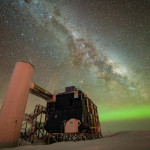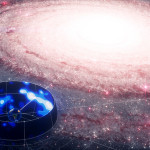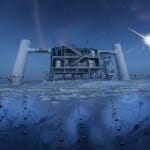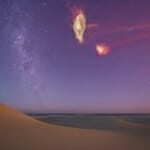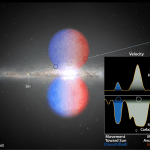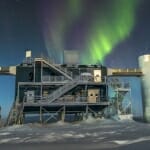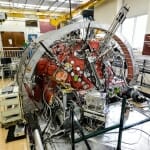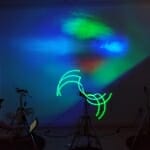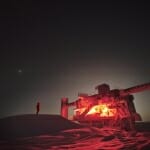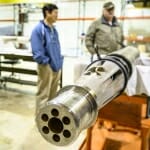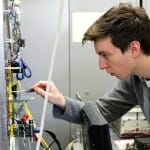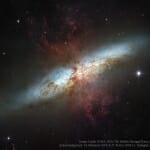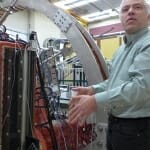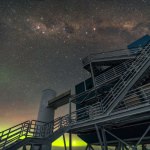Tag Astrophysics
Watery planets orbiting dead stars may be good candidates for studying life — if they can survive long enough
The small footprint and dim light of white dwarfs, remnants of stars that have burned through their fuel, may make excellent backdrops for studying planets with enough water to harbor life.
Federal physics advisory panel recommends funding next generation IceCube observatory, other major experiments
A group of scientists tasked with advising the federal government's investments in particle physics research is recommending that the United States fund a planned expansion of the IceCube Neutrino Observatory, an international scientific collaboration operated by the University of Wisconsin–Madison at the South Pole.
IceCube shows Milky Way galaxy is a neutrino desert
For the first time, the IceCube Neutrino Observatory has produced an image of the Milky Way using neutrinos — tiny, ghostlike astronomical messengers.
Massive halo finally explains stream of gas swirling around the Milky Way
Astronomers have solved a 50-year-old puzzle, discovering that the halo of warm gas surrounding the Magellanic Clouds likely acts as a protective cocoon.
First optical measurements of Milky Way’s Fermi Bubbles probe their origin
Using the Wisconsin H-Alpha Mapper telescope, astronomers have for the first time measured the Fermi Bubbles in the visible light spectrum.
Researchers recreate the sun’s solar wind and plasma “burps” on Earth
A new study by UW–Madison physicists mimicked solar winds in the lab, confirming how they develop and providing an Earth-bound model for the future study of solar physics.
Cosmic ray exhibits, conference explore the universe’s mysteries
Event Horizon: portraits of three physicists captured holding an object that inspired their careers, and Messages from the Horizon, which consists of spinning LEDs representing black holes, are on display in the Main Gallery of the Memorial Union.
Seminar on astrobiology aims to inspire a look into the bounds of life
By bringing together biologists, chemists, engineers, astronomers and others, astrobiology aims to uncover the origin of life on our planet and life’s prospects in the cosmos.
Gamma ray telescope ready for prime time
A new telescope, part of an international effort to develop and build the world’s largest, most sensitive gamma-ray detector, was unveiled to the public Thursday. UW–Madison scientists developed a camera at the heart of the telescope.
LAB3 exhibition helps high school students merge physics and art
A new exhibition featuring artworks inspired by scientific research led by UW–Madison physicists, and created by high school students with the help of artists and writers.
Stellar magnetism: What’s behind the most brilliant lights in the sky?
"The best picture yet of magnetic reconnection in space” offer insight into the role of magnetic reconnection in celestial explosions, eruptions and extraordinary emissions of energy.
UW awarded $12.5 million to study astrophysical plasma here on Earth
The new Wisconsin Plasma Physics Laboratory, or WiPPL, will research fundamental properties of plasma in order to better understand our universe, where the hot gas is abundant.


